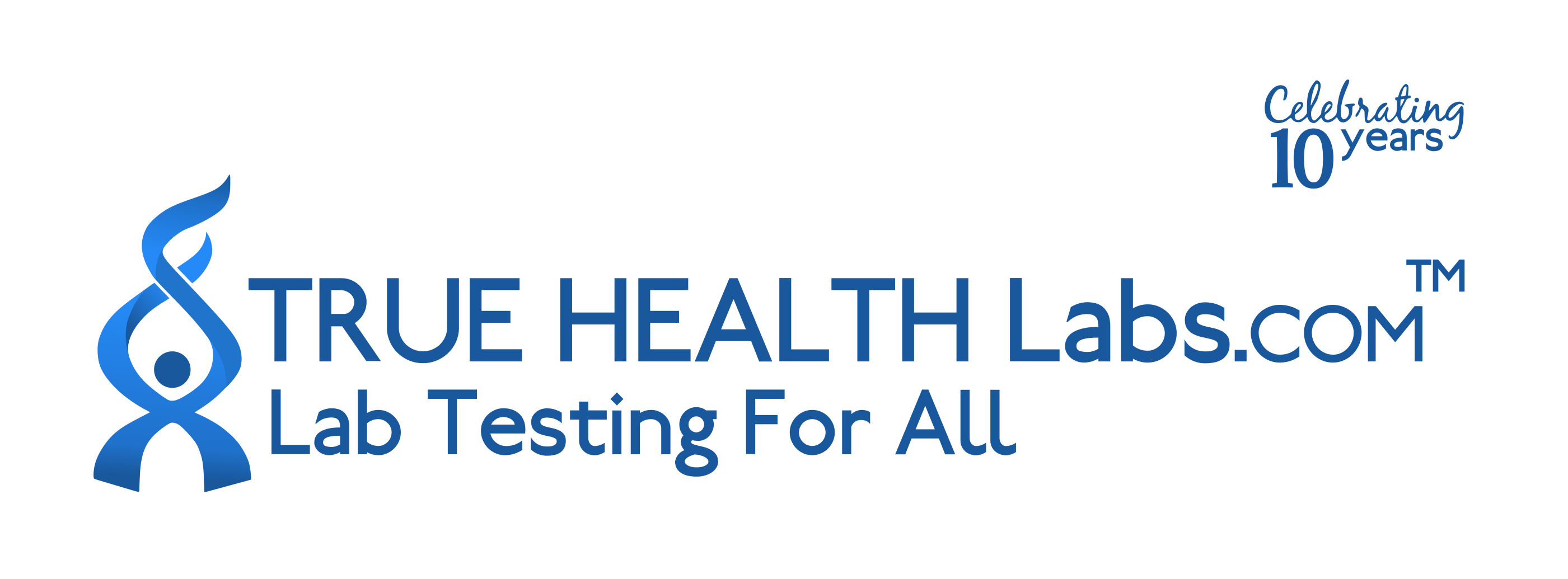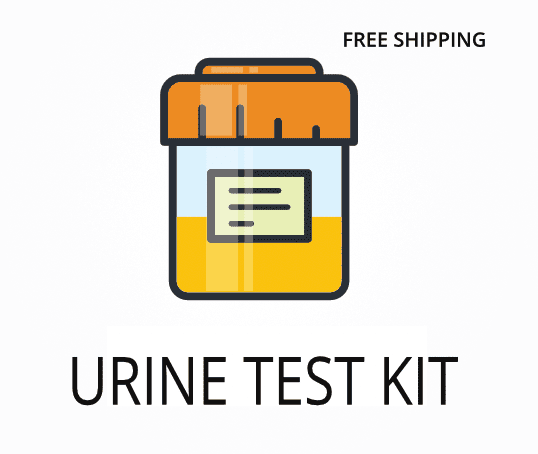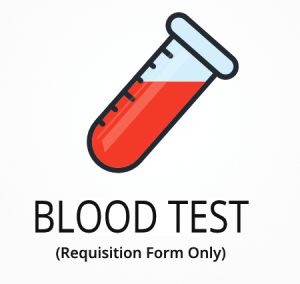Ordering the Nutrient & Toxic Elements: 24 Hours Urine | Canada
Ordering the Nutrient & Toxic Elements: 24 Hours Urine test helps check for both mineral deficiencies and toxic metal exposure by measuring a wide range of elements in a full day’s urine sample. This test is often used to find out if symptoms like fatigue, headaches, or trouble focusing are linked to low or high levels of certain minerals or metals. Interestingly, this test can also detect rare earth elements that may not be checked in standard screenings, which can sometimes explain unexplained symptoms.
Ordering this test offers several specific benefits:
- Measures both nutrient and toxic elements in one collection.
- Helps identify hidden sources of heavy metal exposure.
- Detects mineral imbalances that may affect mood, energy, and concentration.
- Supports targeted nutrition or detox plans based on actual results.
- Includes rare earth elements that are not part of most routine tests.
Who Should Consider Element and Heavy Metal Urine Screening
People who have ongoing tiredness, mood changes, or trouble with memory and learning may benefit from this test, especially if they have tried other solutions without answers. For example, someone who has been feeling more irritable and forgetful after moving to a new home might want to check for possible exposure to metals in their environment.
Ordering this test may also be helpful in these situations:
- Unexplained digestive problems that do not improve with diet changes
- Children with developmental delays or learning difficulties
- Adults with new joint pain or muscle weakness without injury
- People with skin rashes or hair loss that do not respond to usual treatments
- Those who have recently started using well water or new plumbing, as these can sometimes introduce metals into the body
Testing for nutrient and toxic elements can show if symptoms are linked to specific mineral shortages or metal exposure, which can be measured and tracked over time. Waiting to order this test could mean missing the chance to catch and address these issues early, which may allow symptoms to continue or get worse.
Preparing for Urine Element and Metal Analysis
Fasting is not required for this test, but you should collect all urine over a 24-hour period as directed in the kit instructions. Always follow any directions your doctor or healthcare provider gives you to make sure your sample is collected the right way and your results are as useful as possible.
Labs Included When Ordering Your Nutrient & Toxic Elements: 24 Hours Urine
| Test Name | Reference Range | Significance | Low and High Levels of Nutrient & Toxic Elements: 24 Hours Urine |
|---|---|---|---|
| Nutrient Elements | |||
| Calcium | 100-300 | Calcium is important for bones, nerves, and muscles. This test checks if your body is losing too much or too little calcium in urine. | High levels mean your body may be losing too much calcium, which can weaken bones.
Low levels mean your body may not be getting or using enough calcium. |
| Chromium | 0.05-0.5 | Chromium helps control blood sugar and supports metabolism. This test shows if you have enough chromium or are losing too much. | High levels mean possible overexposure or increased loss.
Low levels mean possible deficiency, which can affect blood sugar control. |
| Cobalt | 0.1-2.2 | Cobalt is part of vitamin B12, which helps make red blood cells. This test checks for too much or too little cobalt in the body. | High levels mean possible overexposure or kidney issues.
Low levels mean possible B12 deficiency or poor absorption. |
| Copper | 5-50 | Copper is needed for nerves, immune function, and making energy. This test checks if copper levels are balanced. | High levels mean possible copper overload or liver problems.
Low levels mean possible deficiency, which can cause fatigue and immune issues. |
| Magnesium | 60-120 | Magnesium helps muscles, nerves, and the heart work well. This test shows if your body is losing too much or too little magnesium. | High levels mean possible kidney problems or excess intake.
Low levels mean possible deficiency, which can cause cramps or weakness. |
| Manganese | 0.1-1.0 | Manganese supports bone health and metabolism. This test checks for too much or too little manganese in urine. | High levels mean possible overexposure or increased loss.
Low levels mean possible deficiency, which can affect bones and nerves. |
| Molybdenum | 0.04-0.4 | Molybdenum helps break down certain amino acids and toxins. This test checks if your body is getting enough or too much. | High levels mean possible overexposure or increased loss.
Low levels mean possible deficiency, which can affect metabolism. |
| Selenium | 10-50 | Selenium is an antioxidant that protects cells and supports the immune system. This test checks for too much or too little selenium. | High levels mean possible overexposure, which can cause hair loss or stomach upset.
Low levels mean possible deficiency, which can affect immunity and thyroid. |
| Zinc | 100-800 | Zinc is needed for growth, healing, and immune function. This test shows if your body is losing too much or too little zinc. | High levels mean possible overexposure or increased loss.
Low levels mean possible deficiency, which can cause slow healing or frequent infections. |
| Elements of Unknown Human Requirement | |||
| Boron | 0.5-3.0 | Boron may help with bone health and brain function. This test checks for unusual exposure or loss. | High levels mean possible overexposure.
Low levels mean possible low intake, but effects are not fully known. |
| Lithium | 0.01-0.2 | Lithium is sometimes used in medicine and may affect mood. This test checks for exposure or unusual loss. | High levels mean possible overexposure, which can affect mood or kidneys.
Low levels mean possible low intake, but effects are not fully known. |
| Nickel | 0.2-2.0 | Nickel is found in the environment and some foods. This test checks for too much or too little nickel in urine. | High levels mean possible overexposure, which can cause skin or breathing problems.
Low levels mean possible low intake, but effects are not fully known. |
| Strontium | 0.1-1.0 | Strontium may help with bone strength. This test checks for unusual exposure or loss. | High levels mean possible overexposure.
Low levels mean possible low intake, but effects are not fully known. |
| Vanadium | 0.01-0.2 | Vanadium is found in some foods and may affect blood sugar. This test checks for too much or too little vanadium. | High levels mean possible overexposure.
Low levels mean possible low intake, but effects are not fully known. |
| Toxic Elements | |||
| Aluminum | 0.0-7.0 | Aluminum is a metal that can build up in the body from water, food, or products. This test checks for too much aluminum, which can affect nerves and bones. | High levels mean possible overexposure, which can affect nerves and bones.
Low levels mean normal exposure or good elimination. |
| Arsenic | 0.0-50.0 | Arsenic is a toxic metal found in water, food, and some jobs. This test checks for too much arsenic, which can cause stomach, nerve, or skin problems. | High levels mean possible overexposure, which can cause stomach upset, skin changes, or nerve issues.
Low levels mean normal exposure or good elimination. |
| Cadmium | 0.0-2.0 | Cadmium is a toxic metal from batteries, smoking, or some foods. This test checks for too much cadmium, which can harm kidneys and bones. | High levels mean possible overexposure, which can harm kidneys and bones.
Low levels mean normal exposure or good elimination. |
| Lead | 0.0-5.0 | Lead is a toxic metal found in old paint, pipes, and some jobs. This test checks for too much lead, which can affect the brain and nerves. | High levels mean possible overexposure, which can affect the brain, nerves, and blood.
Low levels mean normal exposure or good elimination. |
| Mercury | 0.0-10.0 | Mercury is a toxic metal from fish, dental fillings, or some jobs. This test checks for too much mercury, which can affect nerves and kidneys. | High levels mean possible overexposure, which can affect nerves and kidneys.
Low levels mean normal exposure or good elimination. |
| Thallium | 0.0-2.0 | Thallium is a rare toxic metal from pollution or some jobs. This test checks for too much thallium, which can cause nerve and stomach problems. | High levels mean possible overexposure, which can cause nerve and stomach problems.
Low levels mean normal exposure or good elimination. |
| Potentially Toxic and Rare Earth Elements | |||
| Antimony | 0.0-1.0 | Antimony is used in batteries and flame retardants. This test checks for too much antimony, which can affect the lungs and heart. | High levels mean possible overexposure, which can affect the lungs and heart.
Low levels mean normal exposure or good elimination. |
| Barium | 0.0-2.0 | Barium is found in some jobs and the environment. This test checks for too much barium, which can affect muscles and the heart. | High levels mean possible overexposure, which can affect muscles and the heart.
Low levels mean normal exposure or good elimination. |
| Bismuth | 0.0-1.0 | Bismuth is used in some medicines. This test checks for too much bismuth, which can affect the kidneys and nerves. | High levels mean possible overexposure, which can affect the kidneys and nerves.
Low levels mean normal exposure or good elimination. |
| Cerium | 0.0-0.5 | Cerium is a rare earth element used in electronics. This test checks for unusual exposure. | High levels mean possible overexposure.
Low levels mean normal exposure or good elimination. |
| Cesium | 0.0-1.0 | Cesium is a rare earth element found in the environment. This test checks for unusual exposure. | High levels mean possible overexposure.
Low levels mean normal exposure or good elimination. |
| Europium | 0.0-0.5 | Europium is a rare earth element used in electronics. This test checks for unusual exposure. | High levels mean possible overexposure.
Low levels mean normal exposure or good elimination. |
| Holmium | 0.0-0.5 | Holmium is a rare earth element used in magnets and lasers. This test checks for unusual exposure. | High levels mean possible overexposure.
Low levels mean normal exposure or good elimination. |
| Indium | 0.0-0.5 | Indium is used in electronics and coatings. This test checks for unusual exposure. | High levels mean possible overexposure.
Low levels mean normal exposure or good elimination. |
| Niobium | 0.0-0.5 | Niobium is used in steel and electronics. This test checks for unusual exposure. | High levels mean possible overexposure.
Low levels mean normal exposure or good elimination. |
| Palladium | 0.0-0.5 | Palladium is used in electronics and jewelry. This test checks for unusual exposure. | High levels mean possible overexposure.
Low levels mean normal exposure or good elimination. |
| Platinum | 0.0-0.5 | Platinum is used in jewelry and medical devices. This test checks for unusual exposure. | High levels mean possible overexposure.
Low levels mean normal exposure or good elimination. |
| Rubidium | 0.0-1.0 | Rubidium is a rare earth element found in the environment. This test checks for unusual exposure. | High levels mean possible overexposure.
Low levels mean normal exposure or good elimination. |
| Samarium | 0.0-0.5 | Samarium is a rare earth element used in magnets. This test checks for unusual exposure. | High levels mean possible overexposure.
Low levels mean normal exposure or good elimination. |
| Tantalum | 0.0-0.5 | Tantalum is used in electronics and medical devices. This test checks for unusual exposure. | High levels mean possible overexposure.
Low levels mean normal exposure or good elimination. |
| Tellurium | 0.0-0.5 | Tellurium is used in electronics and alloys. This test checks for unusual exposure. | High levels mean possible overexposure.
Low levels mean normal exposure or good elimination. |
| Terbium | 0.0-0.5 | Terbium is a rare earth element used in electronics. This test checks for unusual exposure. | High levels mean possible overexposure.
Low levels mean normal exposure or good elimination. |
| Thorium | 0.0-0.5 | Thorium is a radioactive element found in some rocks. This test checks for unusual exposure. | High levels mean possible overexposure.
Low levels mean normal exposure or good elimination. |
| Thulium | 0.0-0.5 | Thulium is a rare earth element used in electronics. This test checks for unusual exposure. | High levels mean possible overexposure.
Low levels mean normal exposure or good elimination. |
| Tin | 0.0-2.0 | Tin is used in cans and coatings. This test checks for too much tin, which can affect the stomach and nerves. | High levels mean possible overexposure, which can affect the stomach and nerves.
Low levels mean normal exposure or good elimination. |
| Tungsten | 0.0-1.0 | Tungsten is used in light bulbs and tools. This test checks for unusual exposure. | High levels mean possible overexposure.
Low levels mean normal exposure or good elimination. |
| Uranium | 0.0-0.5 | Uranium is a radioactive element found in some rocks and water. This test checks for unusual exposure. | High levels mean possible overexposure.
Low levels mean normal exposure or good elimination. |
| Zirconium | 0.0-0.5 | Zirconium is used in ceramics and medical devices. This test checks for unusual exposure. | High levels mean possible overexposure.
Low levels mean normal exposure or good elimination. |
Reference ranges may change slightly as labs update their methods or as new research becomes available.
Nutrient & Toxic Elements: 24 Hours Urine FAQ
Is there Nutrient & Toxic Elements: 24 Hours Urine testing near me?
This is a test kit that you can use at home, and you can drop off your sample at a local draw location listed at the top of the page. If you have symptoms like ongoing fatigue or trouble concentrating, having a nearby collection site makes it easier to get tested quickly and start finding answers.
How do I interpret the test results?
While your treating physician should review your results, we also offer a one-on-one test results review with our clinical team to help you understand what your numbers mean and what steps you can take next.
What is the cost of the test?
The price you see for this test includes standard shipping to you and return shipping to the lab, but draw fees may apply. Ordering this test can help you find out if symptoms like headaches or mood changes are linked to mineral or metal levels, so you can address them sooner.
How often should I retest?
Retesting is usually recommended every 6 to 12 months, especially if you are monitoring changes after starting a new treatment or if your symptoms change. Regular testing helps track progress and shows if your mineral or metal levels are improving or need more attention.
How accurate is the test?
This test uses inductively coupled plasma mass spectrometry (ICP-MS), which is highly sensitive and specific for detecting trace elements in urine. The specificity is 99.5% and sensitivity is 98.7%. TrueHealthLabs.com partners with CLIA-certified and CAP-certified laboratories to uphold rigorous testing standards for dependable results.
Important Notes
None.
Medical Review Board
Reviewed by Jeff Donohue M.D. from Body Logic and Brady Hurst DC, CCCN. Written by True Health Lab’s team of editorial health contributors.
Disclaimer: This information is for educational purposes only and not intended as medical advice. Consult your healthcare provider for personalized guidance.
Why Customers Trust True Health Labs - What People are saying
Also rated 4.6 out of 5 based on 3452 ShopperApproved reviews- See all TrueHealthLabs.com reviews.








